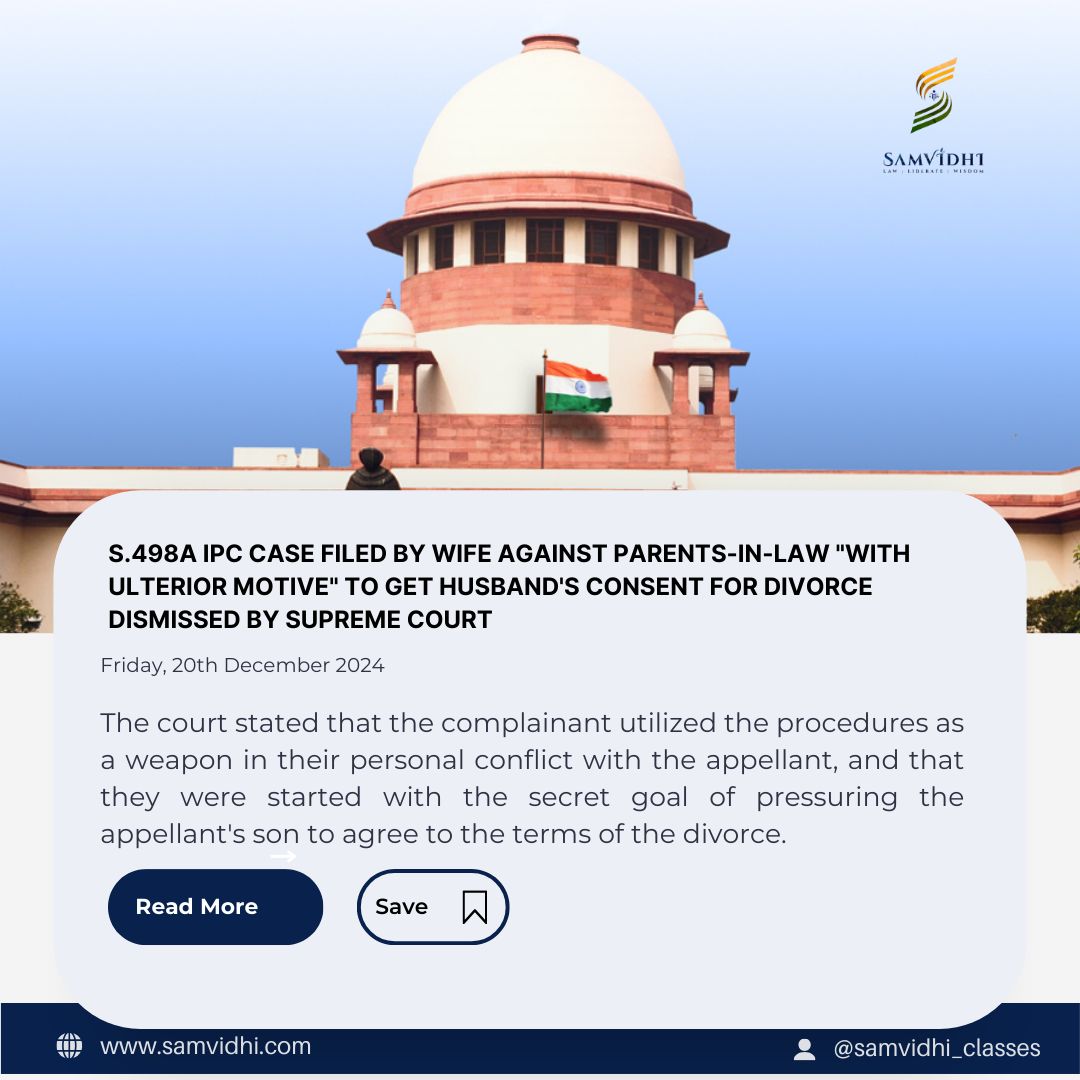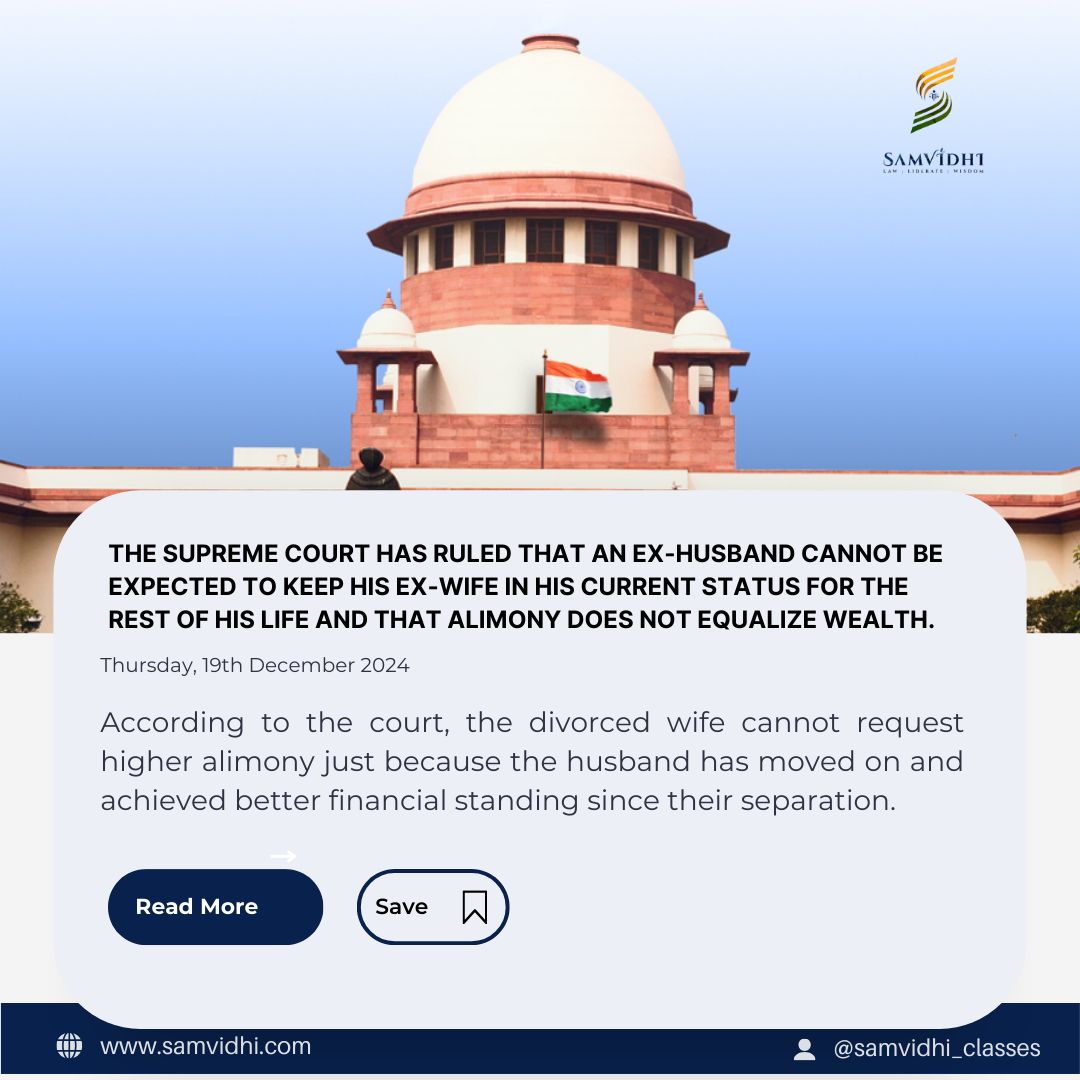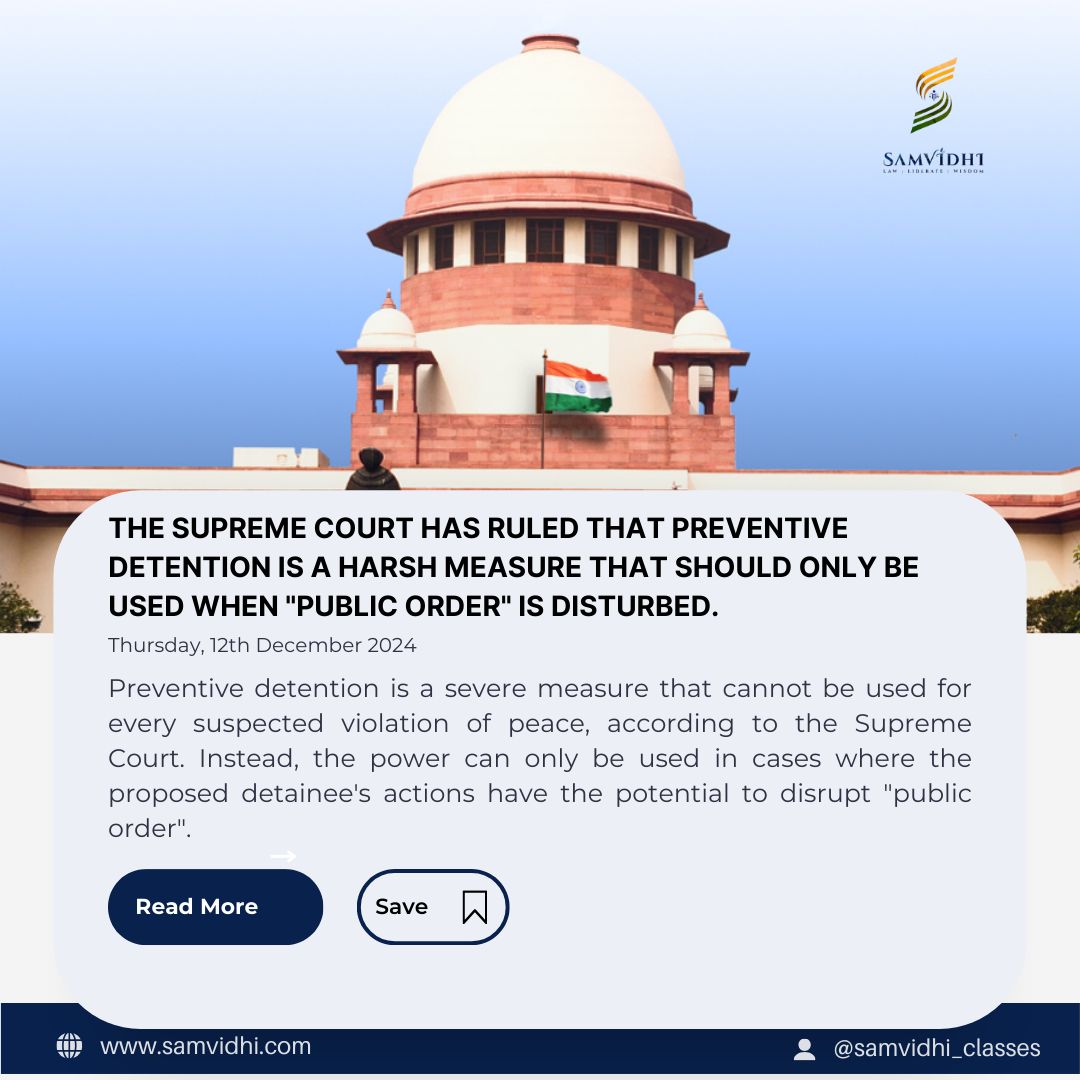Case Name: ARJUN S/O RATAN GAIKWAD Versus THE STATE OF MAHARASHTRA AND ORS.
The Supreme Court observed that preventive detention is a severe measure that cannot be used to every suspected breach of peace when it revoked an order requiring preventive custody. Instead, the power can only be used in cases where the proposed detainee’s actions have the potential to disrupt “public order”.
In the case of Ram Manohar Lohia v. State of Bihar, Hidayatullah J (as his Lordship was then) provided a concise discussion of the difference between public order and law and order.This Court’s Constitution Bench has ruled that public disorder does not result from every violation of the peace. A bench of Justices BR Gavai and KV Viswanathan ruled that preventive detention, a harsh measure, would not be allowed when someone could be dealt with in the exercise of authority to maintain law and order, unless the proposed detainee’s actions had the potential to disturb public order.
For the past three years, the petitioner (proposed inmate) has been producing artisan liquors. Government employees and others living close experienced various difficulties as a result, to the point where several locals fled their homes and no one dared to voice their displeasure. In this context, the Court observed that despite six complaints being filed against the petitioner for engaging in illegal liquor business activities, the excise authorities did not feel compelled to make an arrest. Additionally, the authorities relied on two witness statements to support the petitioner’s claims of threats, although these remarks were ambiguous, stereotyped, and identical.
Even if taken at face value, such statements would demonstrate that the petitioner threatened the privacy of both the stated witness and the petitioner. Additionally, the statements do not demonstrate that the petitioner intimidated the aforementioned witnesses in front of the villagers, which would have given the people the impression that the petitioner posed a threat to public order, the Court stated.
Additionally, it emphasized the difference between a “public disorder” scenario and a “law and order” issue as follows: “Each case’s unique facts and circumstances would determine the authority to uphold law and order. For instance, there won’t be a threat to public order if a vicious murder is committed inside a neighborhood. On the other hand, it would be a threat to public order if someone in a public area with many of people present caused a commotion with his actions and persisted in doing so in a way that made the general public fearful. Therefore, there could not even be a physical attack in a particular instance.
In addition to issuing the order, the Court cited the ruling in Ameena Begum v. State of Telangana, which noted that rules pertaining to preventive detention are a “exceptional measure reserved for tackling emergent situations” and should not be applied as a means of upholding “legitimacy.” In this instance, the Court vehemently denounced Telangana’s increasing practice of issuing preventative detention orders at the “drop of a hat” without taking into account the freedom and liberty that the Indian Constitution guarantees its citizens.In the end, the Court revoked the preventative detention order because it could not discover evidence of the detaining authority’s subjective satisfaction that the petitioner’s actions were detrimental to public order. If not needed in any other situation, the petitioner was ordered to be freed immediately.




